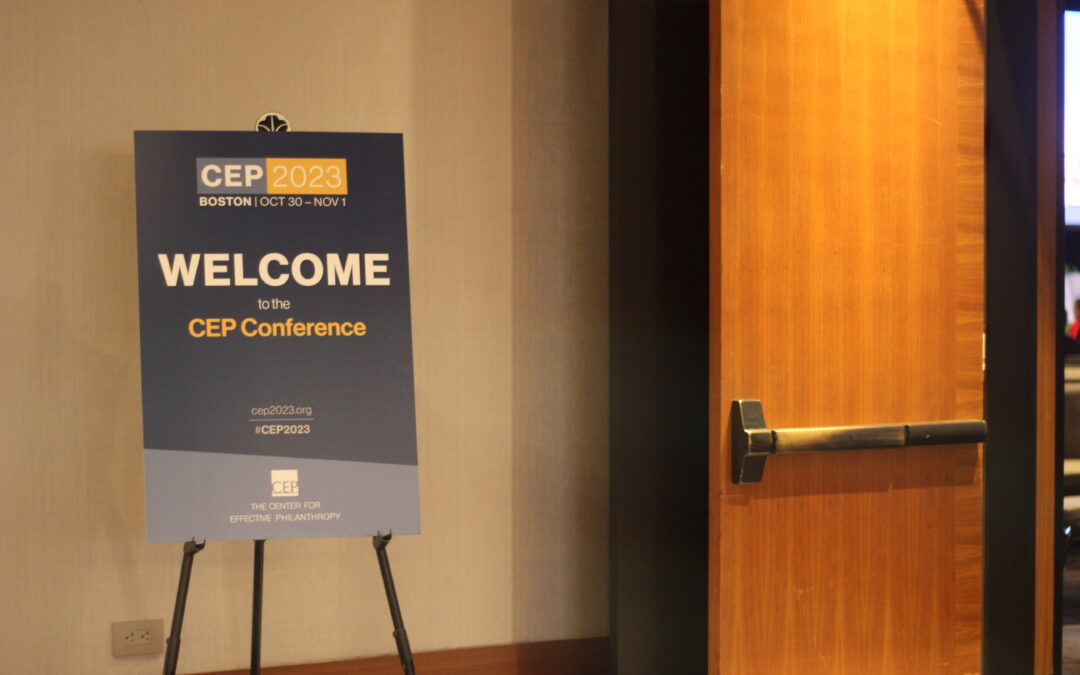This afternoon, as we closed the doors on the final session of the CEP conference, our whirlwind three days together at CEP2023 came to an end. As you each return to your own lives, families, and work, we hope you leave us with a plethora of new ideas, tools, and perspectives, and that you feel energized, connected, and reinvigorated to return to the day-in, day-out work of effective philanthropy.
The final day of the conference was a star-studded one, and we were privileged to hear from global climate activists, leading advocates for closing the racial wealth gap, our own Mayor of Boston, and artist and activist John Legend.
“It has to be done in collaboration”
Barr Foundation President and Trustee Jim Canales opened day three, bringing us into a conversation on closing the racial wealth gap by noting that just as in yesterday’s plenary on democracy the case was made that all funders must incorporate a democracy strategy into their funding, so too must all funders contend with racial equity. He introduced a panel made up of UpTogether CEO Jesús Gerena, Kataly Foundation CEO Nwamaka Agbo, The Boston Foundation President and CEO Lee Pelton, and Prabal Chakrabarti, executive vice president and community affairs officer at the Federal Reserve Bank of Boston.
Grounding us in the data, Canales referred to a widely remarked-upon statistic in the Federal Reserve Bank of Boston’s study, “The Color of Wealth in Boston”: the median net worth for white households in Greater Boston was about a quarter million dollars, while for Black households it was $8.
After members of the panel shared elements of their own stories and their “whys” for doing this work, ranging from lived experience to a belief in the power of data and storytelling to ignite powerful collective action, they turned to the “how.”
Agbo named an extractive economic system as a key part of the problem and offered the Kataly Foundation’s experiments with non-extractive integrated capital through their Restorative Economies Fund, while Gerena noted, “we can’t philanthropy our way out” of this problem but must instead address the underlying systems and structures that ensure the racial wealth gap remains in place.
Turning to lessons learned in the work that they have already engaged in on this issue, Chakrabarti shared that while the Boston Fed convened community members after conducting The Color of Wealth study, he realized they should have engaged earlier. Pelton, meanwhile, reflected that “there is no single entity in philanthropy, or in government, or in business that can close this gap — it has to be done in collaboration.”
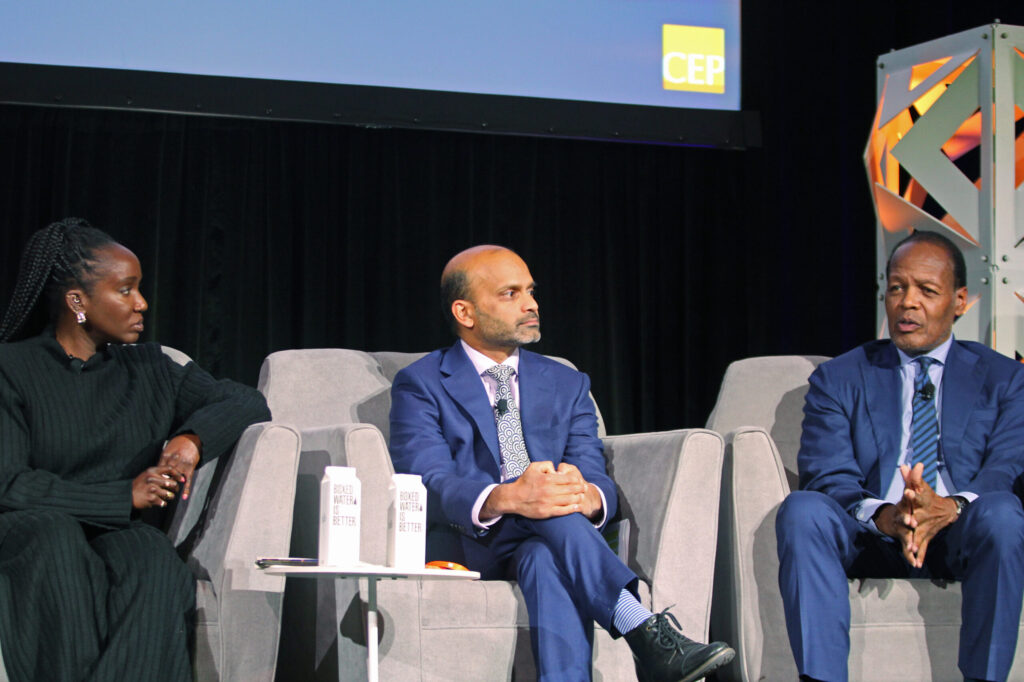
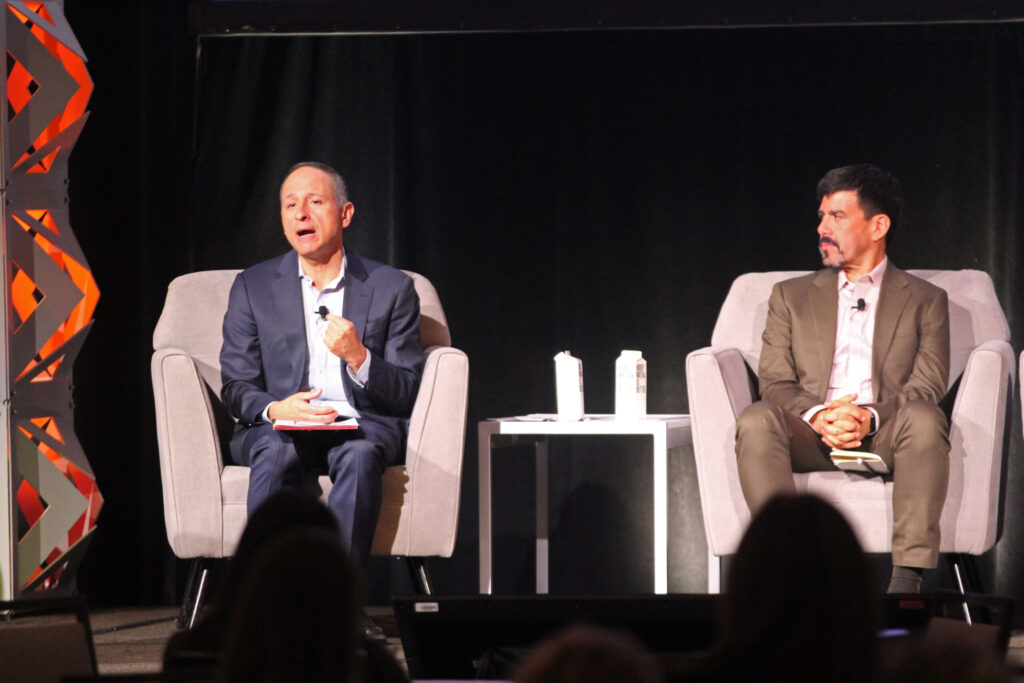


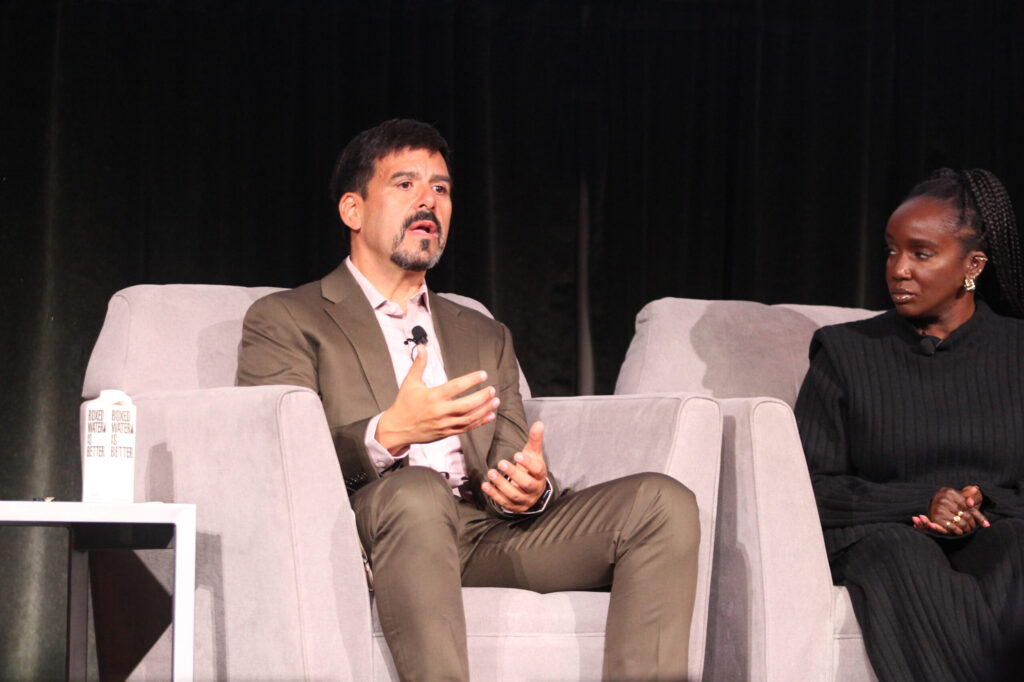
Attendees left this rousing and informative session to select a breakout on one of seven topics, ranging from how funders can support movement building, to the practicalities and possibilities of collecting demographic data, to a discussion of how philanthropy must grapple with the arrival of AI.
“We need philanthropy to show up”
Then, with boxed lunches in hand, attendees reconvened in the main ballroom to hear from marine biologist, policy expert, writer, and climate action advocate Ayana Elizabeth Johnson. In an interview with CEP’s Kevin Bolduc, vice president of assessment and advisory services, Johnson shared what brought her into climate action work and her goal of welcoming as many people as possible into climate work as possible, helping them to find where they fit in and can make a difference.
Among her many projects and initiatives, Johnson co-edited the anthology of climate essays “All We Can Save” and, when asked about the role for philanthropy in climate work, she referred to the anthology and hoped that funders would be able to glean from it the sheer breadth of what climate work can look like, as well as its value.
Nearing the close of their one-on-one, Bolduc asked Johnson about her call to action for funders, and in answer, she did a quick poll of the audience, asking who funds in democracy, gender, immigration issues, and others. As hands raised, she nodded, exhorting that climate is deeply embedded in each of these issues, and should be a part of the strategy. Finally, she urged that now is the time to act: “None of the money you spend in ten years will matter one percent as much as the money you spend now.”
A panel including Lee Risby, director of effective philanthropy at the Laudes Foundation, global climate activist and co-founder of the Re-Earth Initiative Xiye Bastida, and Dan Stein, founder and executive director of Giving Green, then joined the two on stage.
Bolduc asked the panel to respond to what Johnson shared, in answer to which Bastida emphasized both the urgency of the issue and the way that it will impact everyone: “all of you are going to love someone in 2100.” Stein also zeroed in on the interconnectedness of climate, and Bolduc shared insight from CEP research in which many funders shared that one of the key reasons they were not funding climate was that it didn’t fit into their mission.
Asking the panel whether philanthropy should pivot toward climate, even at the cost of leaving other issues behind, Lee noted that while pivoting would likely be unwise and waste more time, funders can and should integrate climate into other program areas and draw on approaches that already exist. He was also emphatic about the need to share what’s working and what’s not working.
Thinking about action, Stein offered a framing that, given philanthropy’s responsibility to maximize social impact, the idea that some issue areas are more impactful than others, and that climate is among the biggest existential risks we face, every funder needs to at least think about climate work.
Johnson chimed in with a third option, calling on funders to spend out, or spend more, now — “What are you waiting for?” she asked. She also noted that even if there are obstacles to integrating climate funding into your grantmaking work, every funder can at least divest from fossil fuels, removing their money from investing in the expansion of fossil fuels.
Bastida added that, in her own journey as a climate activist, she has learned that while showing up in the streets to protest may be free, building a movement is not. “We need philanthropy to show up,” she said.
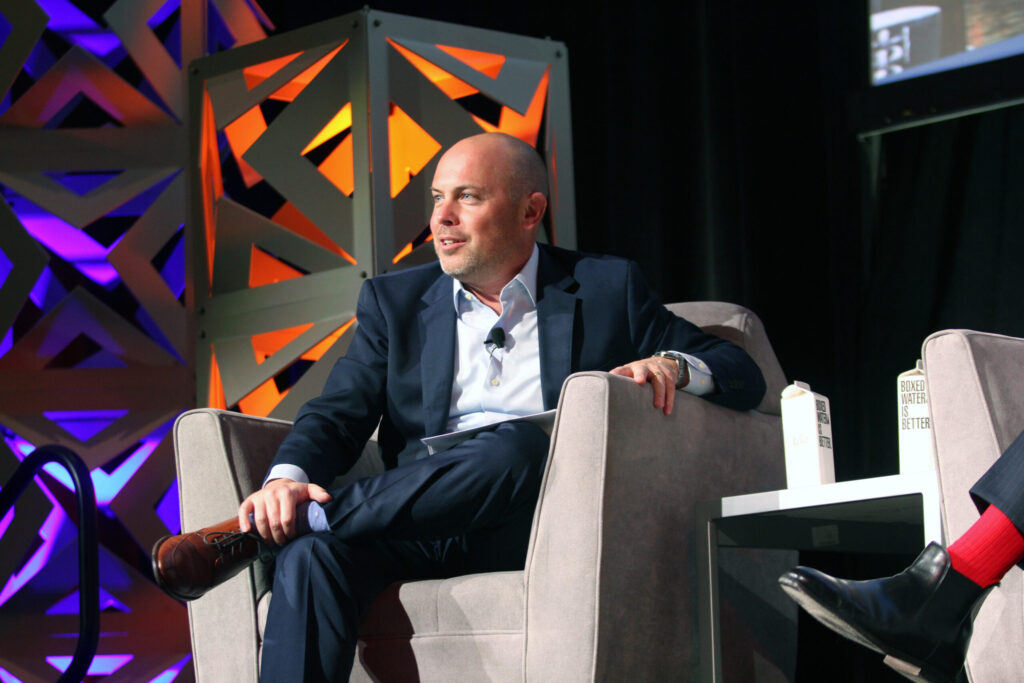
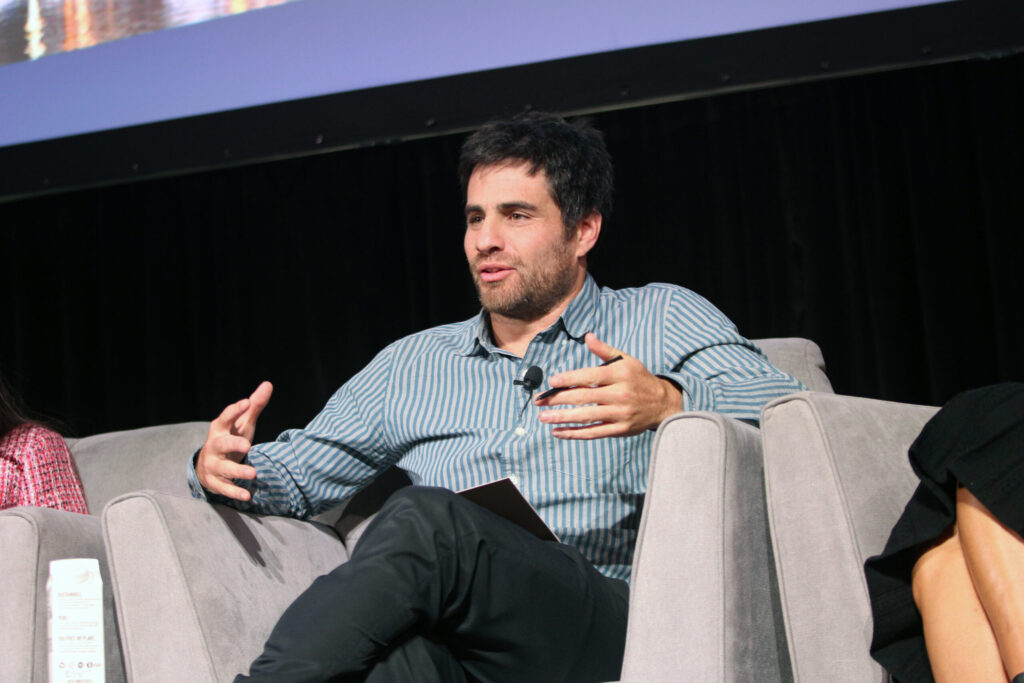
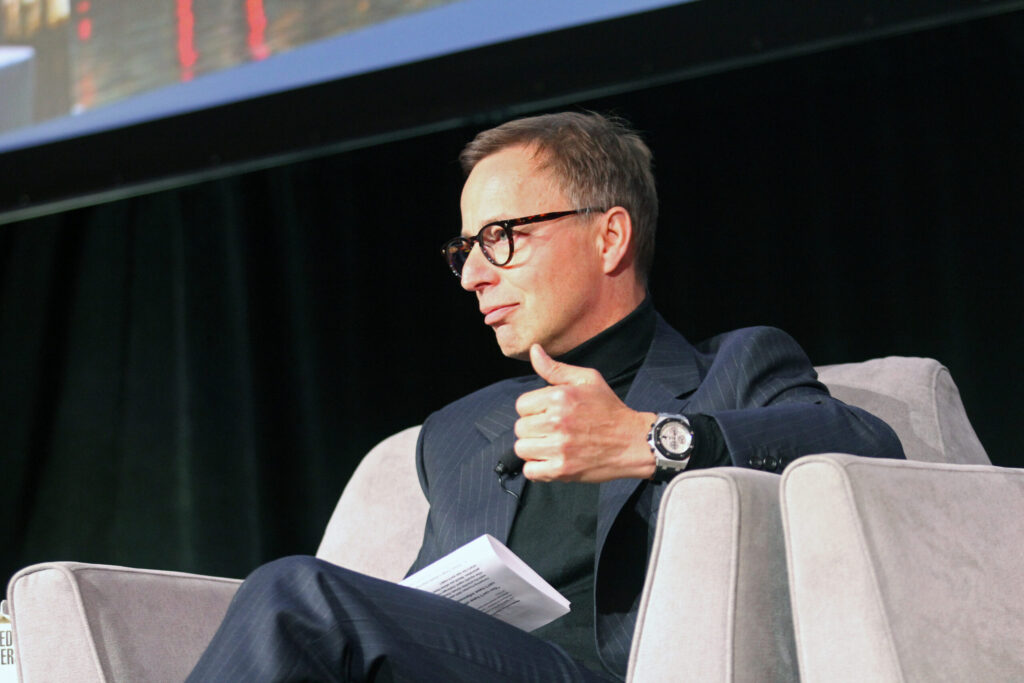

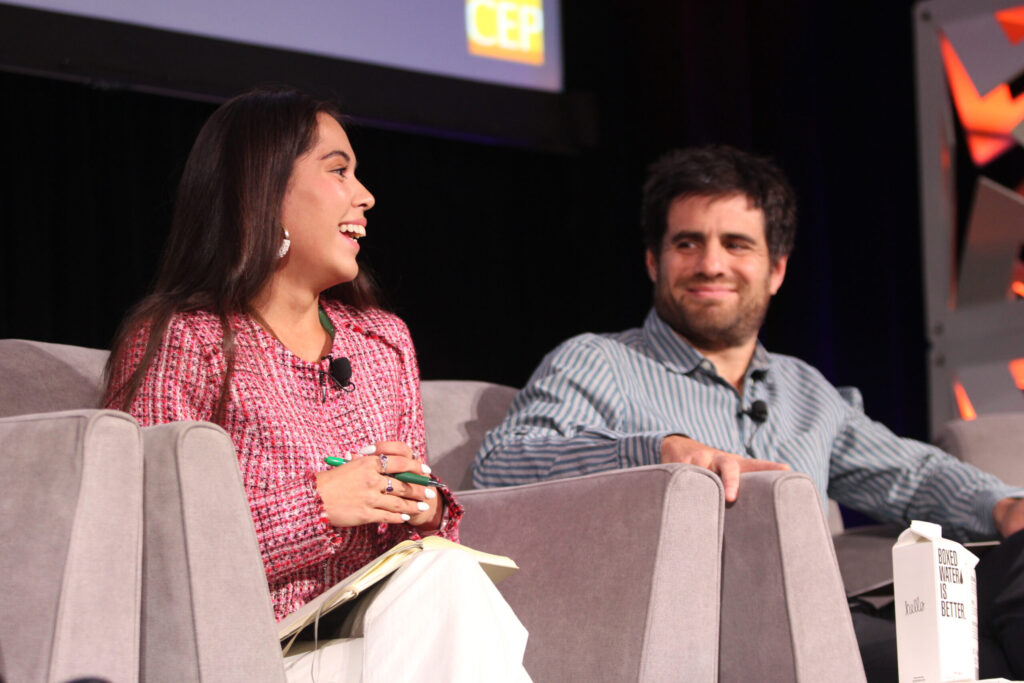
“Cities are really where innovation and impact come to life”
In a highly anticipated session that started shortly after our panel on climate philanthropy, Grace Nicolette, CEP’s vice president of external relations took the stage alongside Andre Perry, senior fellow at the Brookings Institution, Mayor of Boston Michelle Wu, and artist and activist John Legend.
Nicolette turned first to Legend, asking him why, in his advocacy work, he has been particularly drawn to cities. Legend noted that in thinking about how to make people’s lives better, so much of the decision-making about how people live happens on the local level: “f we are thinking about equity…we’ve got to affect what happens in their local communities,” he said. Perry added that regardless of what you think of city governments, they are undoubtedly a part of the solution.
Turning to Mayor Wu, Nicolette asked her to share her perspective on the role private foundations can play in working with city governments. In response, Wu illustrated the way that municipal governments operate, so often, on the basis of responding to the unexpected, adding that there is also no other place where you can have the kind of immediacy of impact as you can in municipal government. “Cities are really where innovation and impact come to life,” she said.
The panel went on to discuss the particular role that private philanthropy can play in modeling and experimenting with innovative, future-thinking solutions that can then be implemented more widely, and Legend emphasized the power that exists in convening a network of people working at the municipal level across the country to share what’s working and scale it.
Toward the close of the session, a member of the audience asked Legend what role he saw for himself in advising and encouraging other celebrities interested in getting involved in philanthropy. Affirming that he does see a role for himself in that, he also stated that it is not just about giving but that you have to “be smart about how you give…learn about the issues you care about and listen to the people who are most acutely affected by them.”
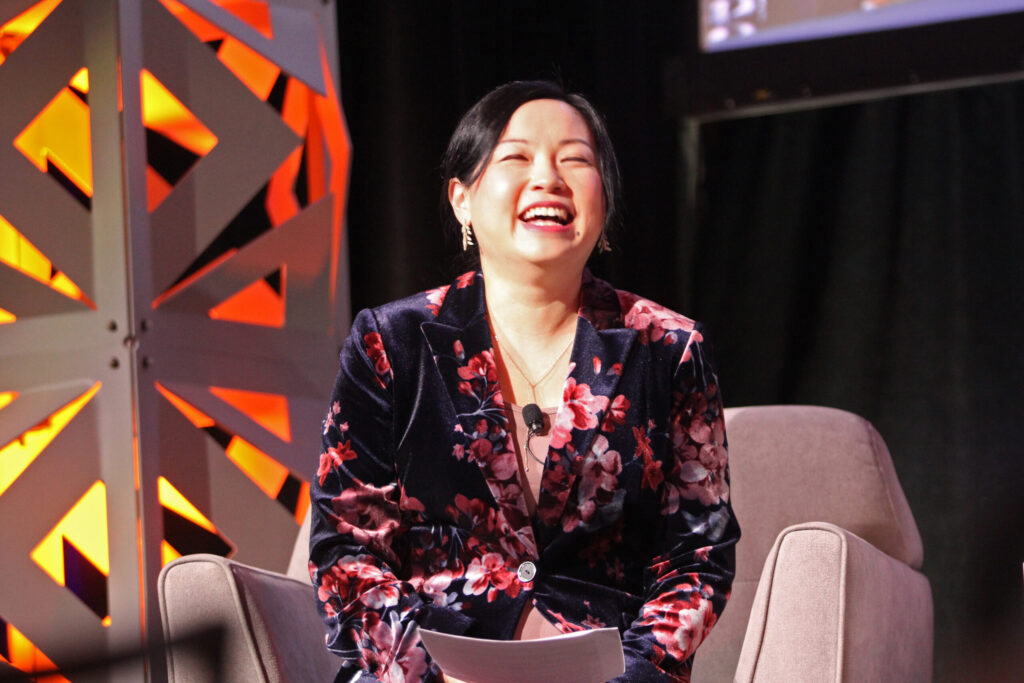

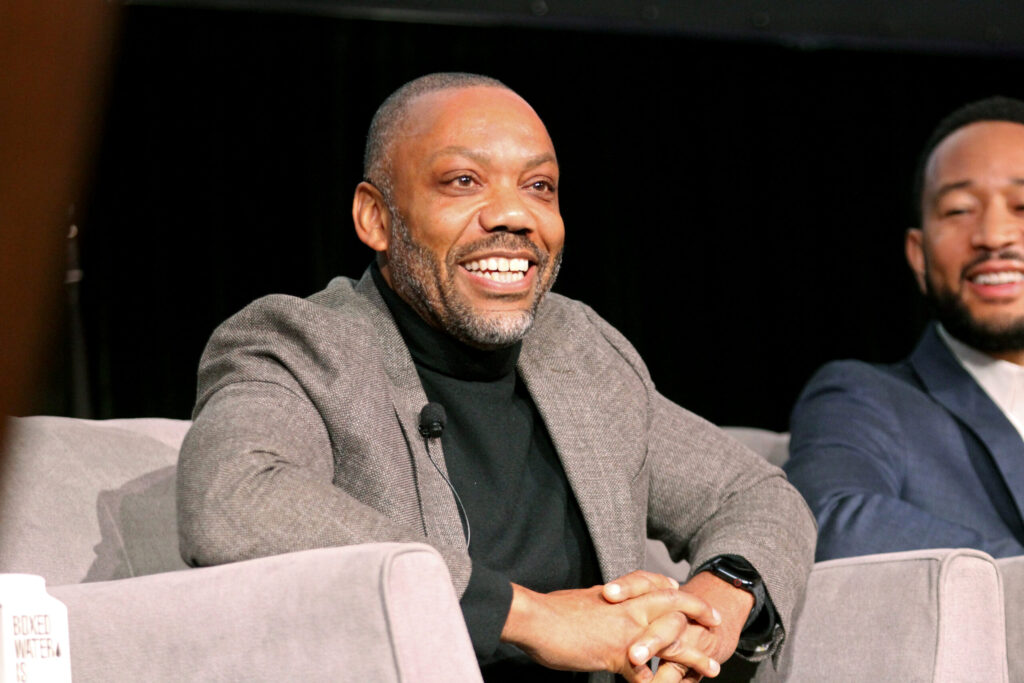
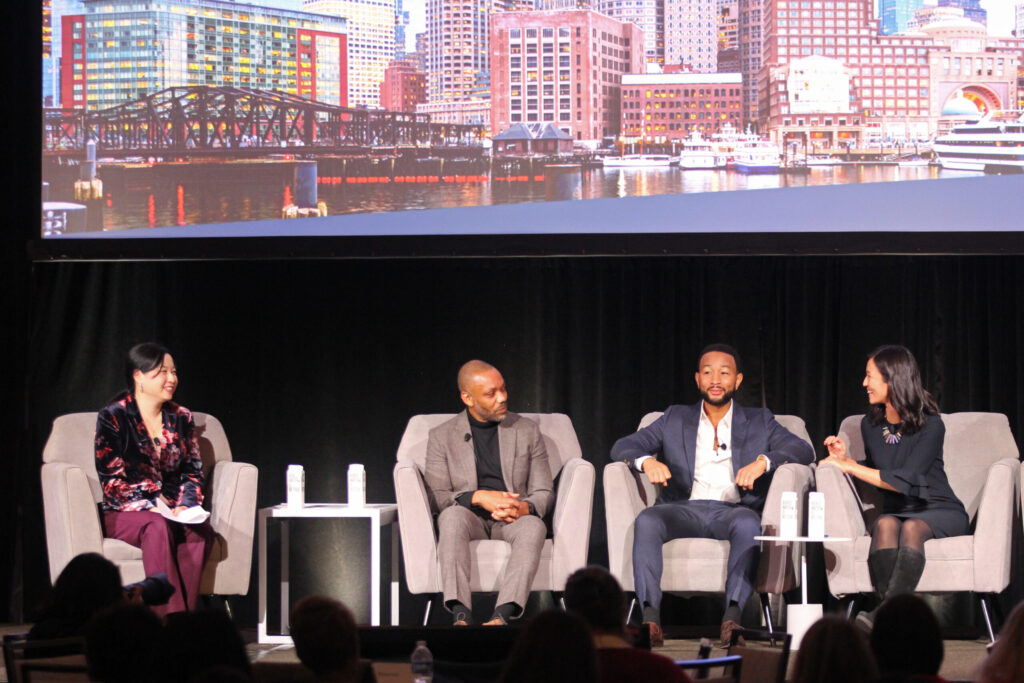
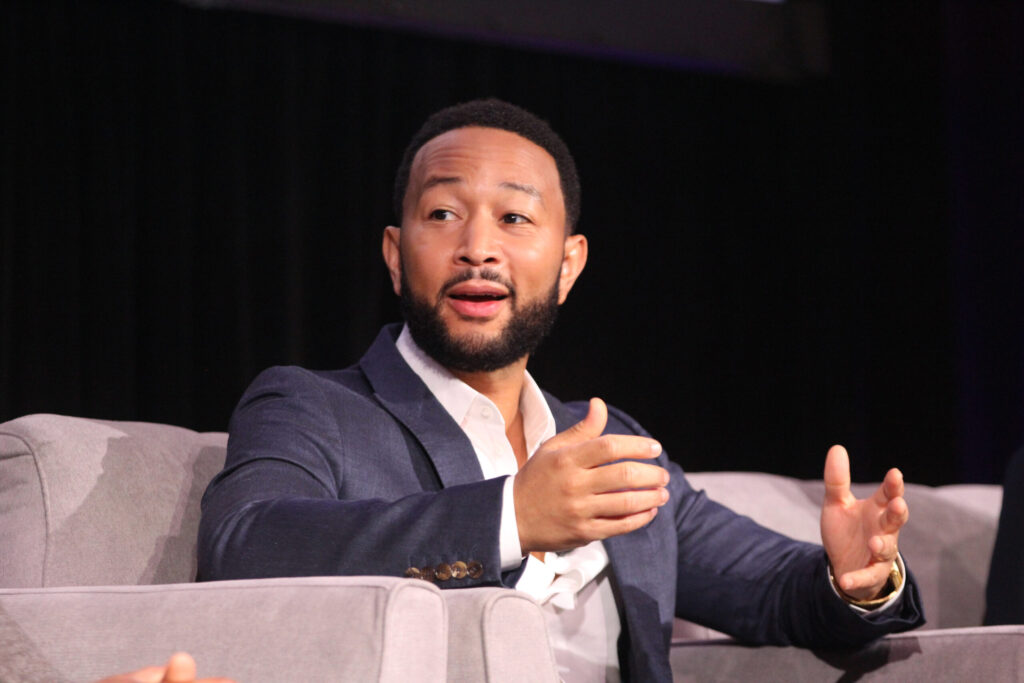
“But for philanthropy…”
In our final session of the conference, Phil Buchanan, president of CEP, set the difficult task of bringing three packed days together in front of panelists Sampriti Ganguli, CEP board member and CEO of Arabella Advisors, Karen McNeil-Miller, president and CEO of the Colorado Health Foundation, and Dick Ober, president and CEO of the New Hampshire Charitable Foundation.
To start, Ober named several tensions that were surfaced during CEP’s gathering, including the treating symptoms but changing systems, acting today, but remaining relevant, trust and proximity alongside evidence and evaluation, and others. McNeil-Miller added that she believes there is room for all of those tensions to be true and to coexist.
In wrapping up, Buchanan asked the panelists to reflect on something that makes them hopeful. Ganguli shared her thinking about the “but for” test, noting that in looking back at history, there are many instances of positive changes where we can say, “but for philanthropy, this would not have happened.” She encouraged each of us to ask ourselves what our “but for” issue is — what we would look back on in 30 years and hope to have changed.

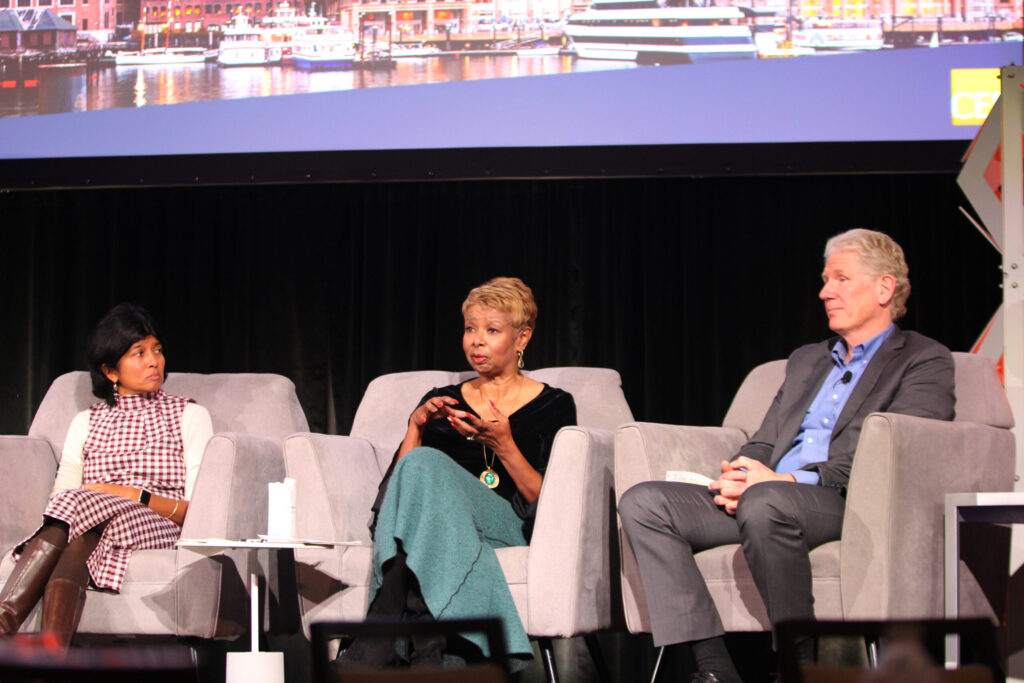
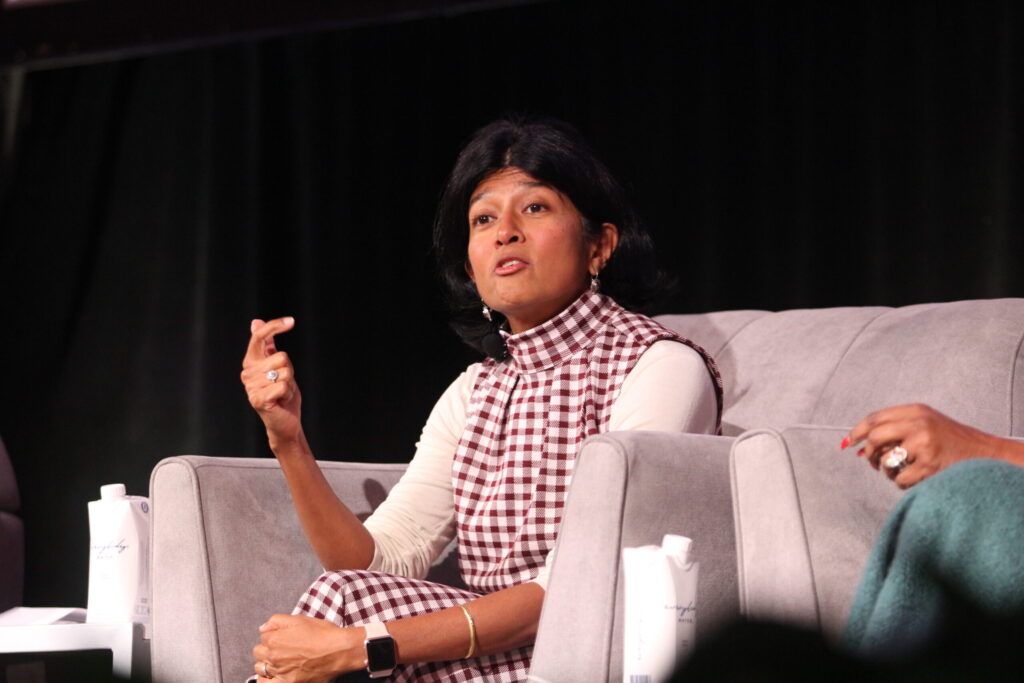
To paraphrase Ganguli, I’ll wrap up by saying: but for you, this conference would not be what it is — we are so grateful.
And I’ll leave you with this last request (because we wouldn’t be CEP if we didn’t ask you to please participate in a survey): if you attended this conference, help us to make future CEP convenings as useful to you as possible by taking the time to fill out our post-conference survey. Attendees should have received a link to the survey by email.
We can’t wait to see you at the next CEP conference in 2025 (more on that very soon)!
Chloe Heskett is editor and writer at CEP. Find her on LinkedIn.

